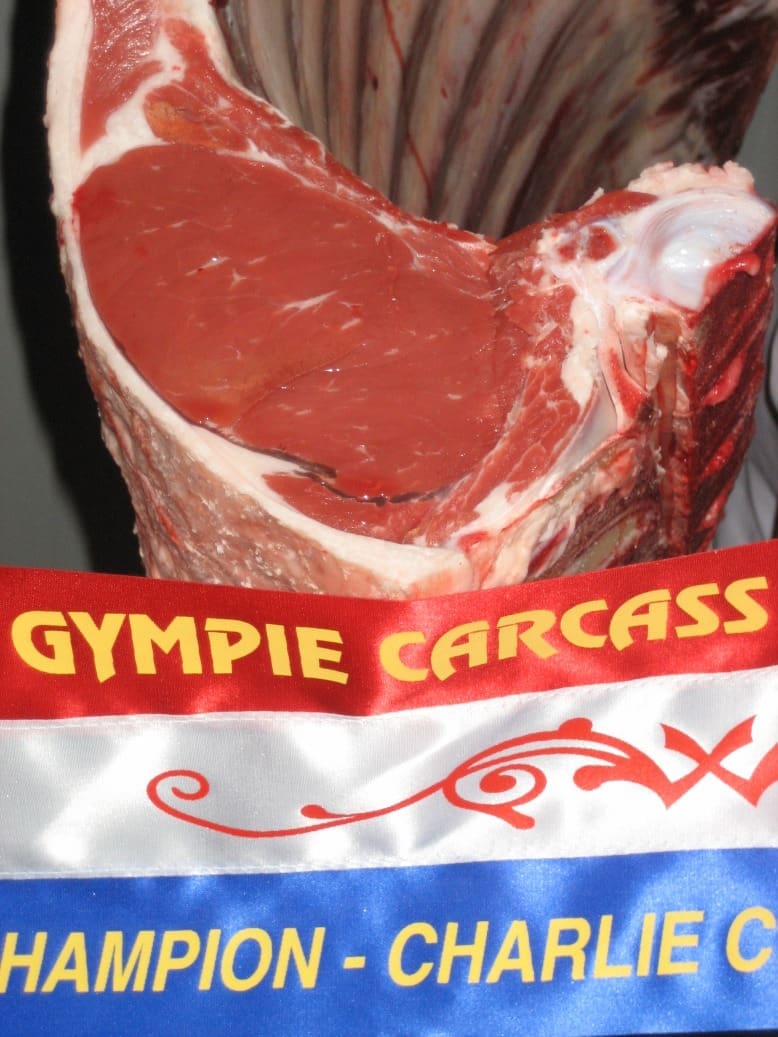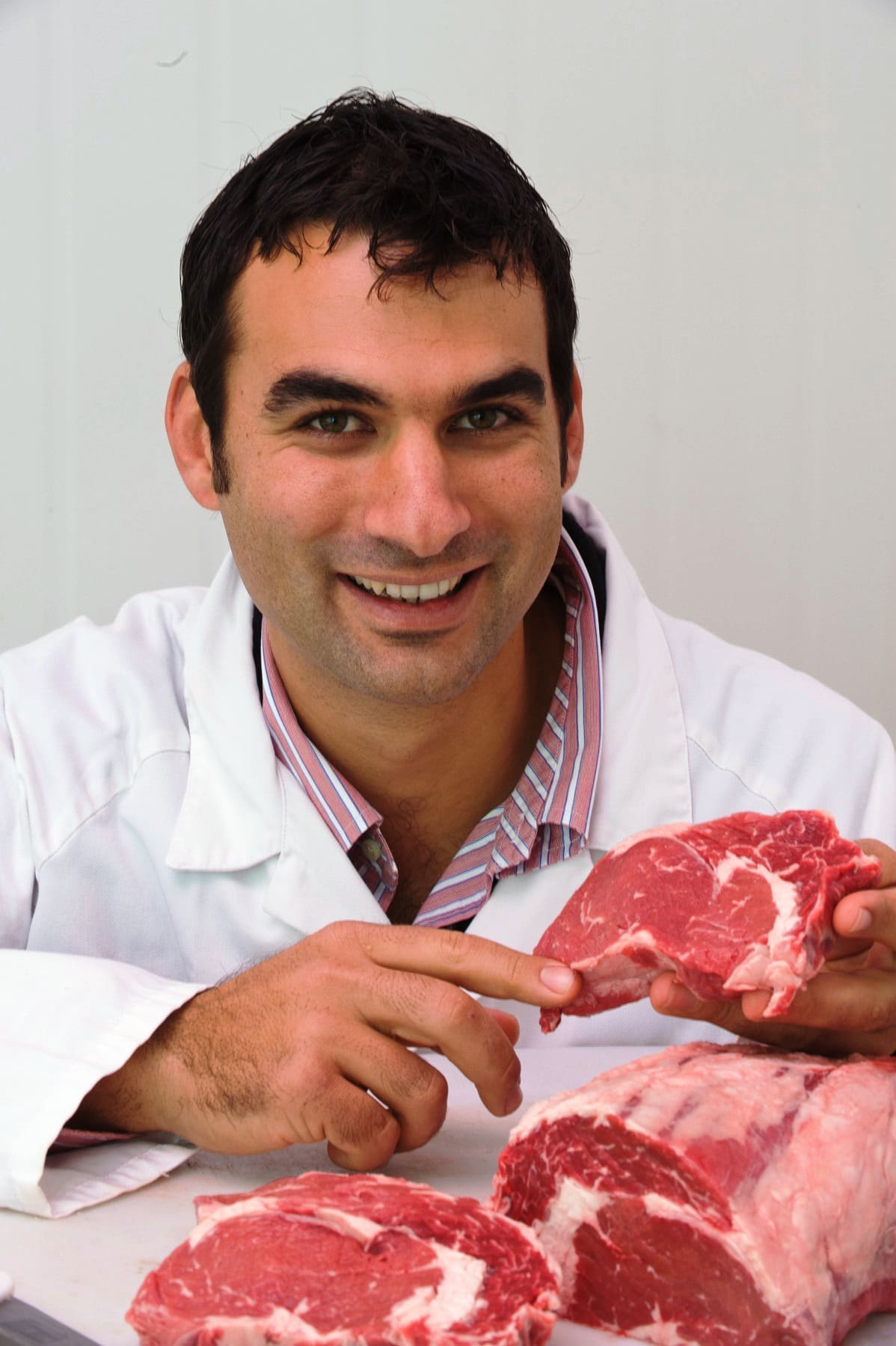EYE Muscle Area (EMA) is a trait often discussed by producers as being a desirable trait to include in their selection decisions. However narrowing down the reason as to why that trait is so desirable often results in some generally vague responses.
 Mostly the response is that increased EMA is a good thing, as it means more muscling and potentially, more valuable animals.
Mostly the response is that increased EMA is a good thing, as it means more muscling and potentially, more valuable animals.
While the intent of these responses is generally correct, it is worth spending a little more time to understand what EMA descriptions mean, and if it is a priority trait for producers to include when seeking to increase carcase value.
There is well-proven data demonstrating the value placed on cattle that exhibit higher amounts of muscling at the point of sale. The most comprehensive study in these areas was conducted by the NSW DPI over many years, analysing the market differences paid through sales reported by the National Livestock Reporting Service (NLRS), and prior to that, the NEW Meat Authority.
This work, published by the late Bill McKiernan, demonstrated a consistent premium of 14c-26c/kg across all saleyard market categories.
These premiums are based on the differences displayed in muscle score across all breeds, ages and weight categories reported by the NLRS. While in some quarters there has been some resistance to the concept of muscle scoring, the broader industry uses muscle scores to describe cattle in physical sales through yards and platforms such as AuctionsPlus.
In one sense the challenge for some people in using muscle scores is that it is a visual process, that requires a full assessment of the volume of the muscle displayed by the animal. This requires assessing the length of body, the depth and width of the body. These assessments are made independent of the influence of fatness. It is definitely a skill that requires an assessor to develop and practice, particularly when looking at cattle of various breed types.
For some people attempting to assess muscling is a challenge, and it often sees confusion as fat cover can be mistaken for muscling. A simple point to remember is that muscle bulges and is round, while fat wobbles, shrouds and smooths-out the appearance of an animal. This confusion often causes people to avoid using muscle scores and instead consider only Eye Muscle Area as their indicator of muscling.
The Eye Muscle (longissimus dorsi) is measured either by ultrasound in live animals or using an AUSMeat Standard grid to count each square centimetre covered by the muscle on a quartered carcase.
Relationship between EMA and muscle score
There is a relationship between EMA and muscle score. However, it is important to recognise some biological influences that can make this relationship less valuable than many producers may realise.
Firstly, the relationship between the two has to be considered at the same weight when looking to assess or select cattle. EMA will increase to reflect the increase in size and weight of the animal.
On the other hand, muscle score may remain unchanged or could change depending on the true muscularity of the animal. The difference between the two measures lies in the fact that Muscle Score is an evaluation of the proportion of red meat in the body, while EMA is simply a surface area measurement of a sample muscle, in cross section.
These observations were confirmed in research that was published in the 1990s within the Proceedings of the Australian Society of Animal Production. The work by Dr Ray Johnson and others, from the University of Queensland, considered three separate studies into the value of using EMA as a predictor of muscle percentage in beef carcases. The study found that “When added to a fat thickness measurement and carcase weight in lightweight carcasses (97-250kg) or in carcasses with a wide weight range (140-356 kg), eye muscle area was of limited value.”
When reviewed for carcases that ranged from 280-512 kg, the value of EMA increased “mainly by explaining more variance, but the prediction was not as accurate as that in lightweight carcases with only fat thickness and carcase weight.”
It is important to place this work in context. For commercial producers or bull breeders seeking to increase the overall degree of muscularity in their cattle, EMA as a single trait is less likely to help achieve the outcome breeders intend.
In fact, selection using muscle score is more likely to achieve this result. Research published by the NSW DPI describing the selection of cattle using muscle score, showed muscle score as being between 56-59pc heritable when adjusted for age and 60-63pc heritable when adjusted for liveweight.
This doesn’t overlook the heritability of EMA – 38-39pc heritable when adjusted for age and 37-45pc when adjusted for weight.

Peter McGilchrist
This basically suggested that it is possible to select for these traits and see an improvement within the herd. However the correlation between muscle score and EMA is only moderate at 53-56pc which lead the researchers to conclude that muscle score and EMA are two different traits.
While using EMA as the principal source of selection for genetically improving muscle in a herd may have less impact that using muscle scores, that isn’t to say EMA should be discounted.
Research published by Dr Peter McGilchrist demonstrated that beef carcases with larger eye muscle areas, lower ossification scores and improved nutrition have lower incidence of dark cutting and therefore greater compliance with MSA requirements.
His research found that increasing EMA from 40 to 80sq cm carcases less than 350kg resulted in a 14pc increase in pH compliance. It was also found that in EMAs higher than 85sq cm, there was no significant improvement in pH in light or heavy carcases.
There are perhaps two clear messages for producers and bull breeders from this.
The first is that younger, more heavily muscled cattle on better nutrition are more likely to achieve pH compliance for MSA. Therefore, EMA should be part of a selection process using higher accuracy EBVs and selection focussing on animals with higher EBVS for the trait.
However, for a more rapid improvement in muscling and potentially a greater impact on overall muscle volume, selection should also include a visual muscle score.
 Alastair Rayner is the Principal of RaynerAg, an agricultural advisory service based in NSW. RaynerAg is affiliated with BJA Stock & Station Agents. He regularly lists and sell cattle for clients as well attending bull sales to support client purchases. Alastair provides pre-sale selections and classifications for seedstock producers in NSW, Qld, and Victoria. He can be contacted here or through his website www.raynerag.com.au
Alastair Rayner is the Principal of RaynerAg, an agricultural advisory service based in NSW. RaynerAg is affiliated with BJA Stock & Station Agents. He regularly lists and sell cattle for clients as well attending bull sales to support client purchases. Alastair provides pre-sale selections and classifications for seedstock producers in NSW, Qld, and Victoria. He can be contacted here or through his website www.raynerag.com.au



When taking measurements for breeding purposes with meat sheep in mind is it important to take eye muscle width aswell as depth?
An informative publication and thanks heaps for making it available. My question is, Is it reasonable to say that a better muscle score is also linked to a better skeletal structure such as a better frame to hang more meat on? If this were the case would it be also reasonable to say that the better the structure to greater the possibility of increased EMA as well? I know the nutrition is significant I am just trying to generalise about objective review as a tool.
Another good article Alastair.
I would like to discuss further a couple of points, eg: muscle shape and saleable meat yield. If you have the time, please give me a call.
What about the correlation of higher EMA with capacity to achieve better glycogen.